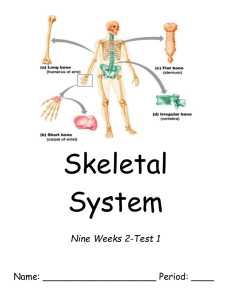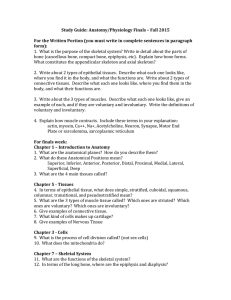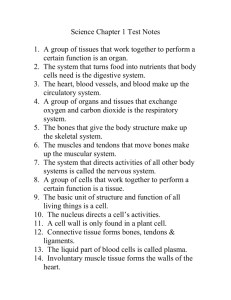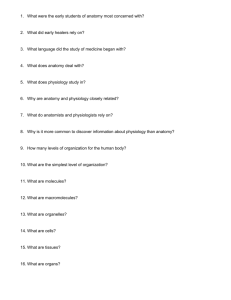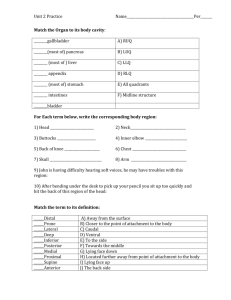Anatomy Mid-Term Exam Study Guide
advertisement
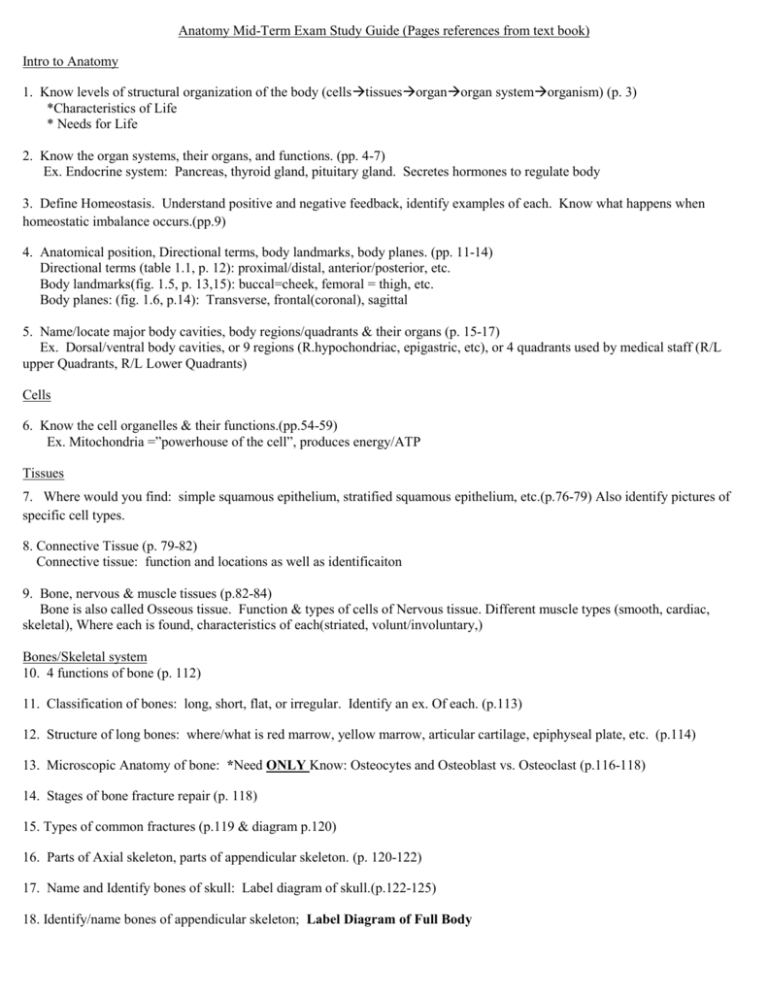
Anatomy Mid-Term Exam Study Guide (Pages references from text book) Intro to Anatomy 1. Know levels of structural organization of the body (cellstissuesorganorgan systemorganism) (p. 3) *Characteristics of Life * Needs for Life 2. Know the organ systems, their organs, and functions. (pp. 4-7) Ex. Endocrine system: Pancreas, thyroid gland, pituitary gland. Secretes hormones to regulate body 3. Define Homeostasis. Understand positive and negative feedback, identify examples of each. Know what happens when homeostatic imbalance occurs.(pp.9) 4. Anatomical position, Directional terms, body landmarks, body planes. (pp. 11-14) Directional terms (table 1.1, p. 12): proximal/distal, anterior/posterior, etc. Body landmarks(fig. 1.5, p. 13,15): buccal=cheek, femoral = thigh, etc. Body planes: (fig. 1.6, p.14): Transverse, frontal(coronal), sagittal 5. Name/locate major body cavities, body regions/quadrants & their organs (p. 15-17) Ex. Dorsal/ventral body cavities, or 9 regions (R.hypochondriac, epigastric, etc), or 4 quadrants used by medical staff (R/L upper Quadrants, R/L Lower Quadrants) Cells 6. Know the cell organelles & their functions.(pp.54-59) Ex. Mitochondria =”powerhouse of the cell”, produces energy/ATP Tissues 7. Where would you find: simple squamous epithelium, stratified squamous epithelium, etc.(p.76-79) Also identify pictures of specific cell types. 8. Connective Tissue (p. 79-82) Connective tissue: function and locations as well as identificaiton 9. Bone, nervous & muscle tissues (p.82-84) Bone is also called Osseous tissue. Function & types of cells of Nervous tissue. Different muscle types (smooth, cardiac, skeletal), Where each is found, characteristics of each(striated, volunt/involuntary,) Bones/Skeletal system 10. 4 functions of bone (p. 112) 11. Classification of bones: long, short, flat, or irregular. Identify an ex. Of each. (p.113) 12. Structure of long bones: where/what is red marrow, yellow marrow, articular cartilage, epiphyseal plate, etc. (p.114) 13. Microscopic Anatomy of bone: *Need ONLY Know: Osteocytes and Osteoblast vs. Osteoclast (p.116-118) 14. Stages of bone fracture repair (p. 118) 15. Types of common fractures (p.119 & diagram p.120) 16. Parts of Axial skeleton, parts of appendicular skeleton. (p. 120-122) 17. Name and Identify bones of skull: Label diagram of skull.(p.122-125) 18. Identify/name bones of appendicular skeleton; Label Diagram of Full Body
